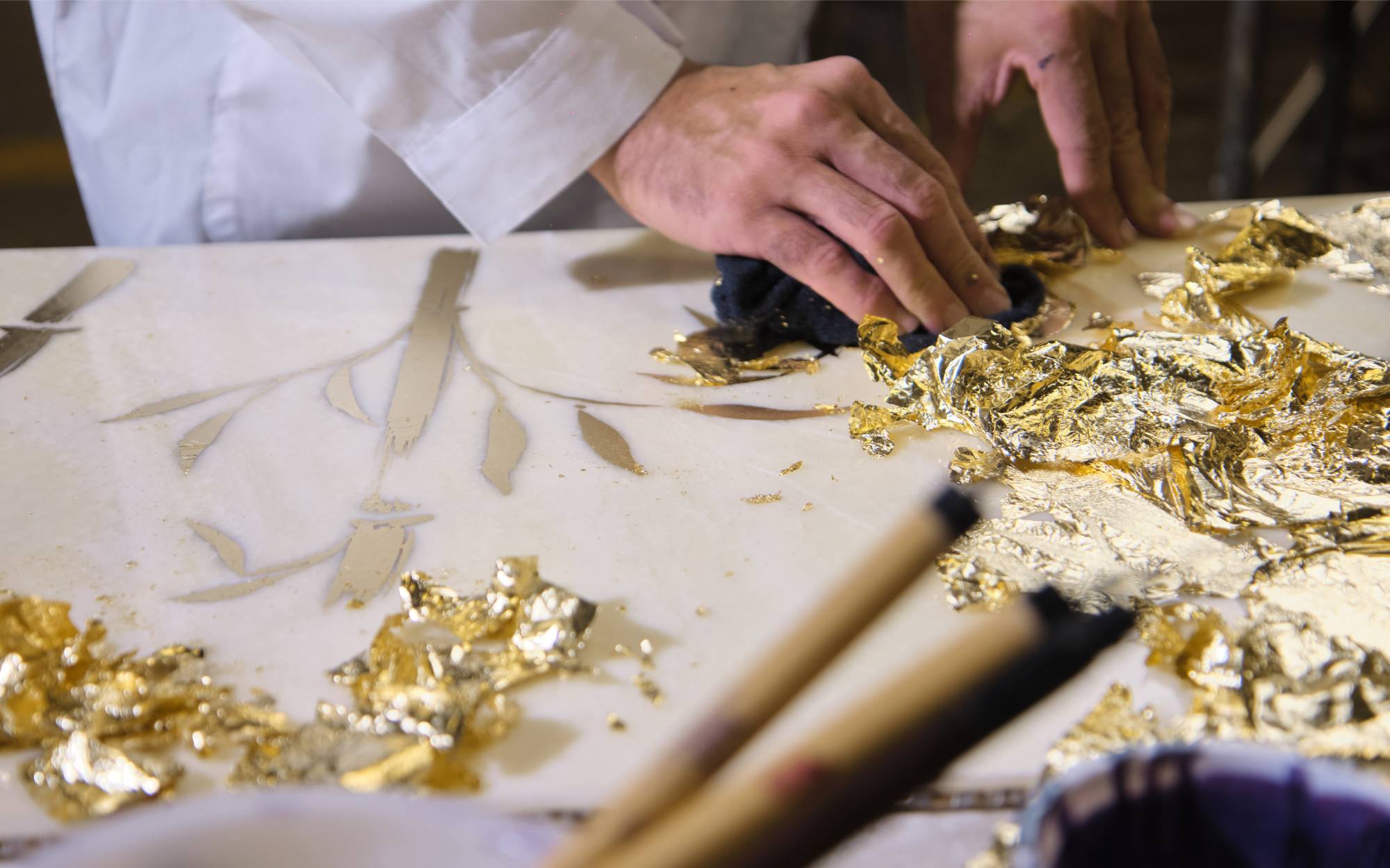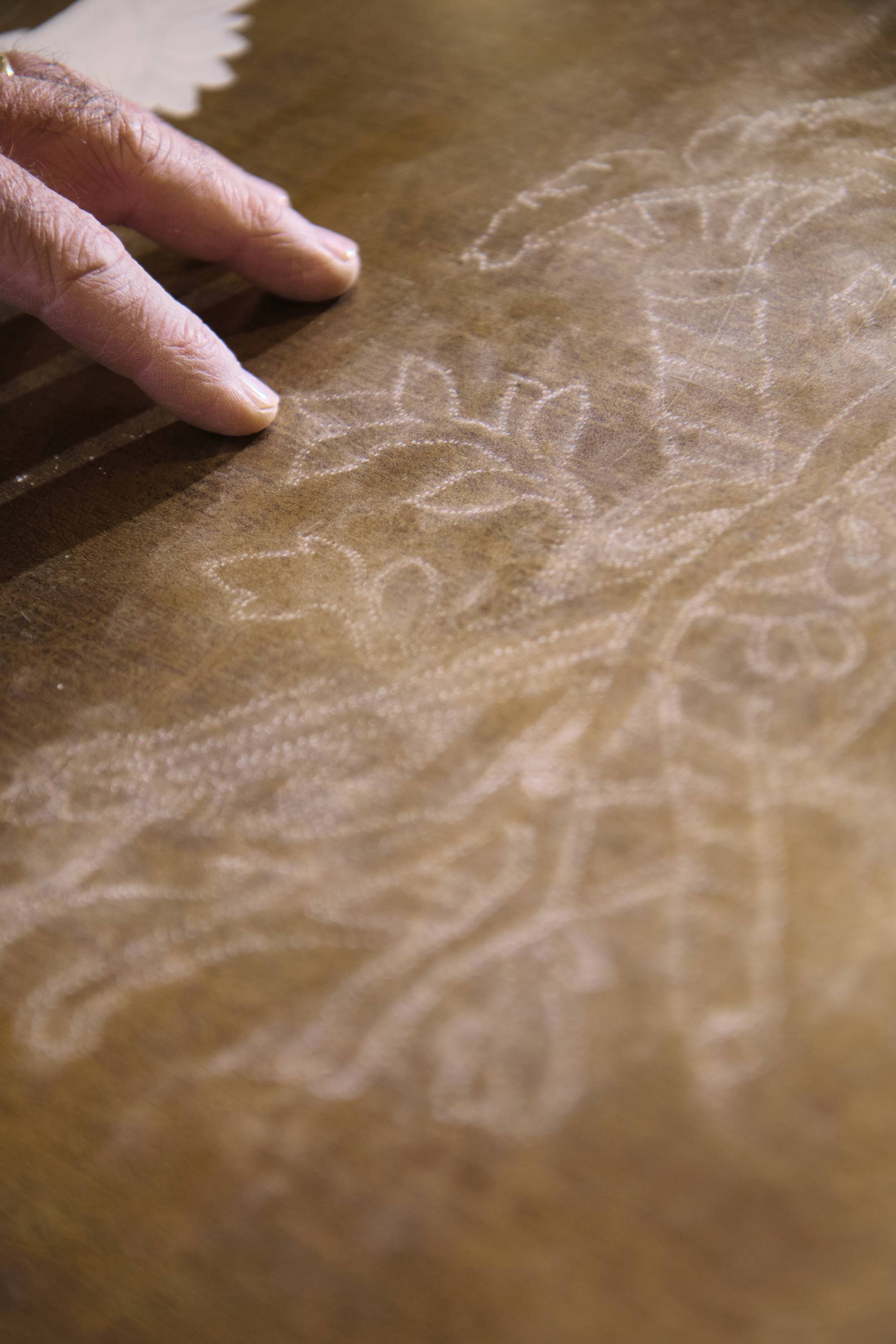Jumbo Collection in-house Master Decorator Danilo Busnelli is a great art lover. His favourite places are churches, particularly those in Piedmont or Genoa, with their Rococo Baroque ornamentation. ‘I like to lose myself in these places and be overwhelmed by inspiration. My greatest satisfaction comes from translating the inspiration into the decorations I develop on the furniture, creating unique atmospheres that have never been realised before,’ says Busnelli.
As a Master Decorator, his work is deeply rooted in art history and craftsmanship. Pictorial decoration in classical furniture is an essential element in enhancing the harmony and elegance of spaces. In this context, painting is not only decorative, but takes on a symbolic and cultural function, enriching the furnishings of all rooms. The motifs are often inspired by mythology, nature and history, creating a visual and narrative link with the architecture. The colour and movement of the decorations harmonise with the richness of materials and shapes typical of classical furniture. The use of golden details, naturalistic or mythological scenes contributes to creating sophisticated atmospheres, emphasising the grandeur of the rooms.







